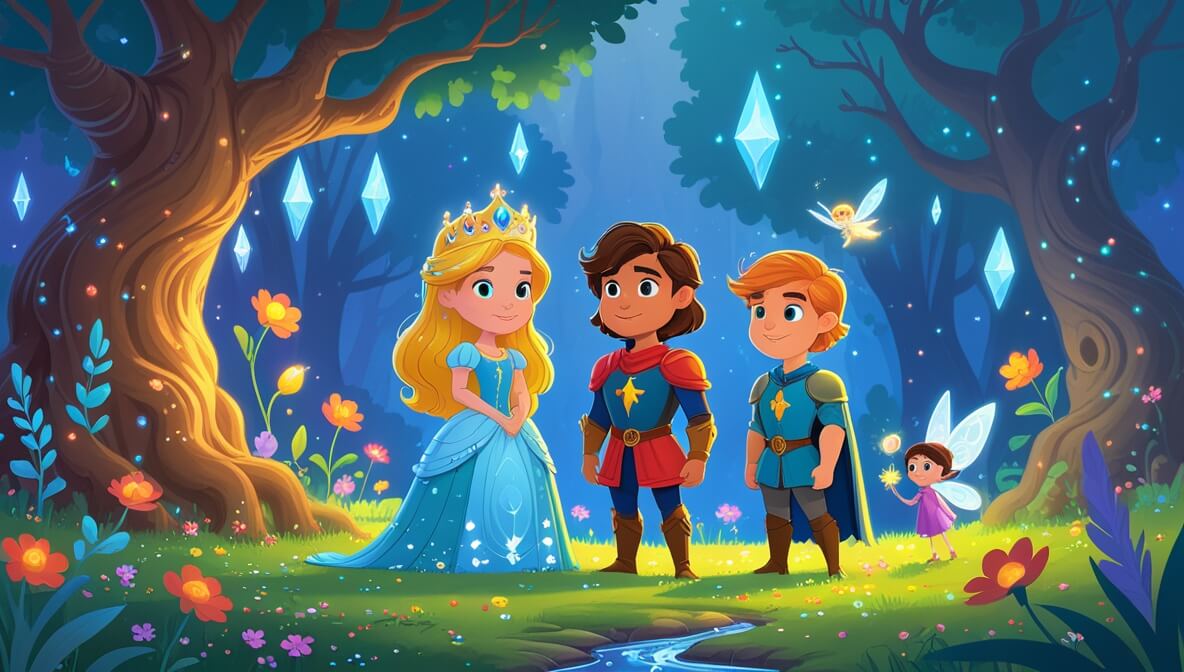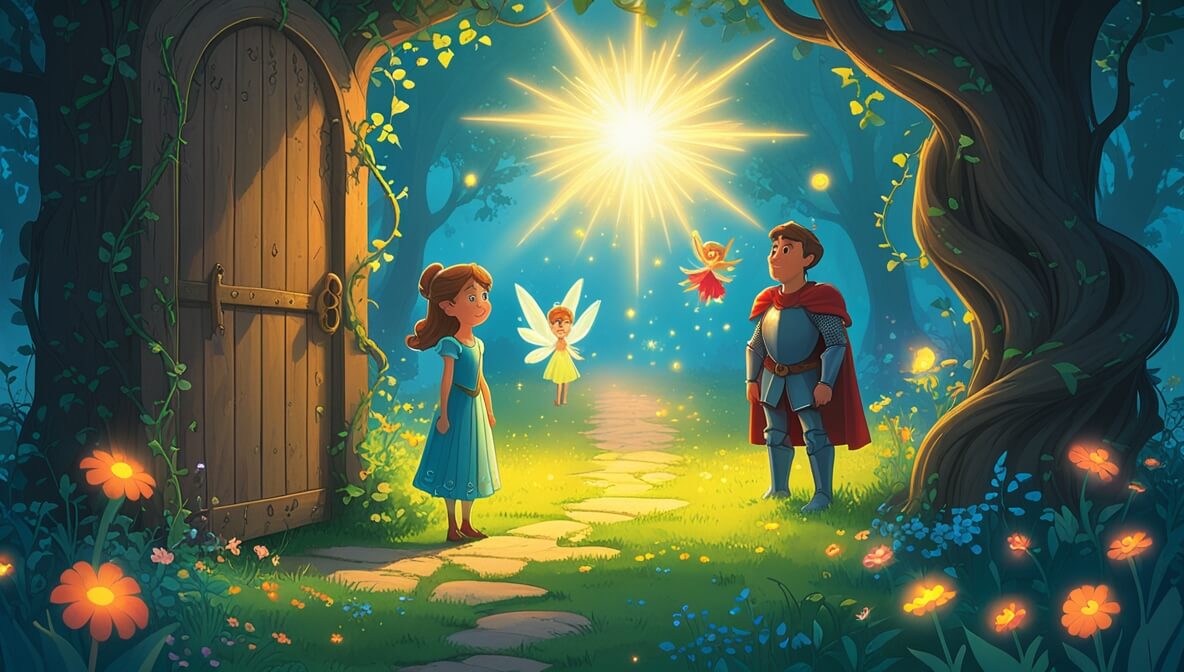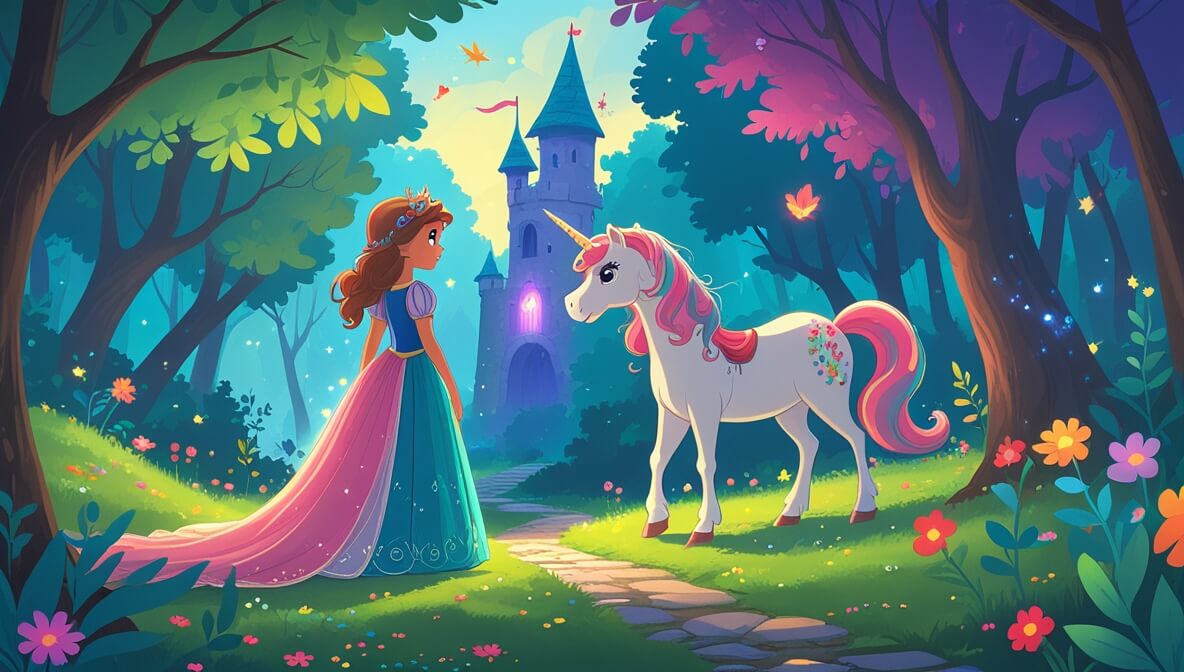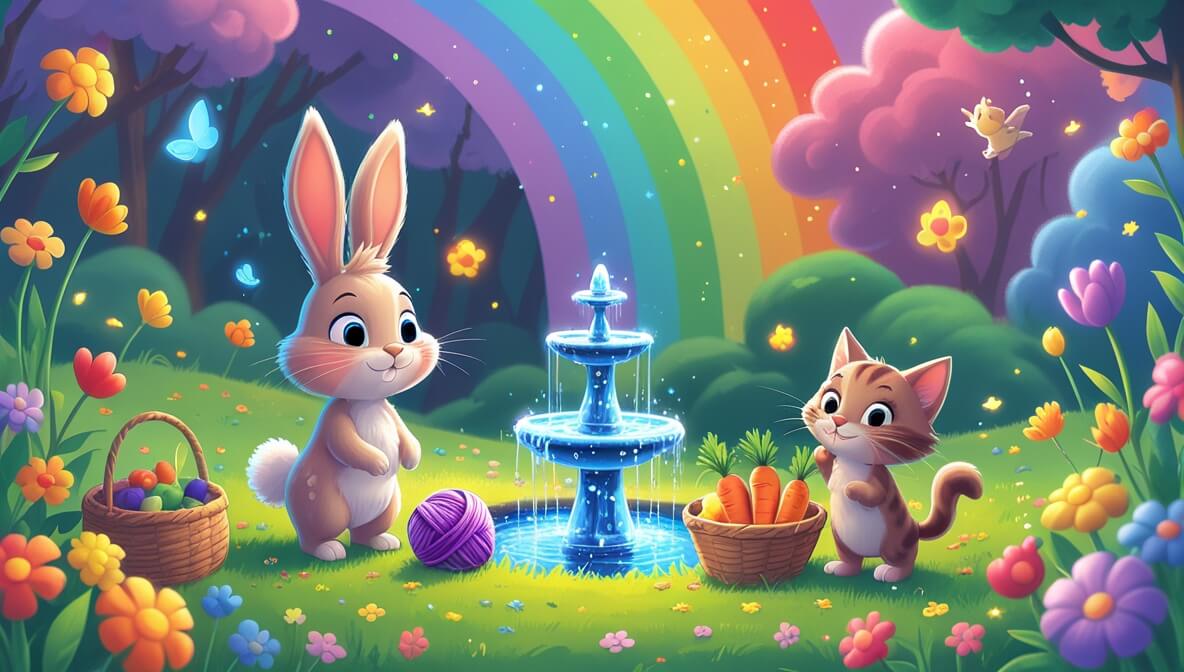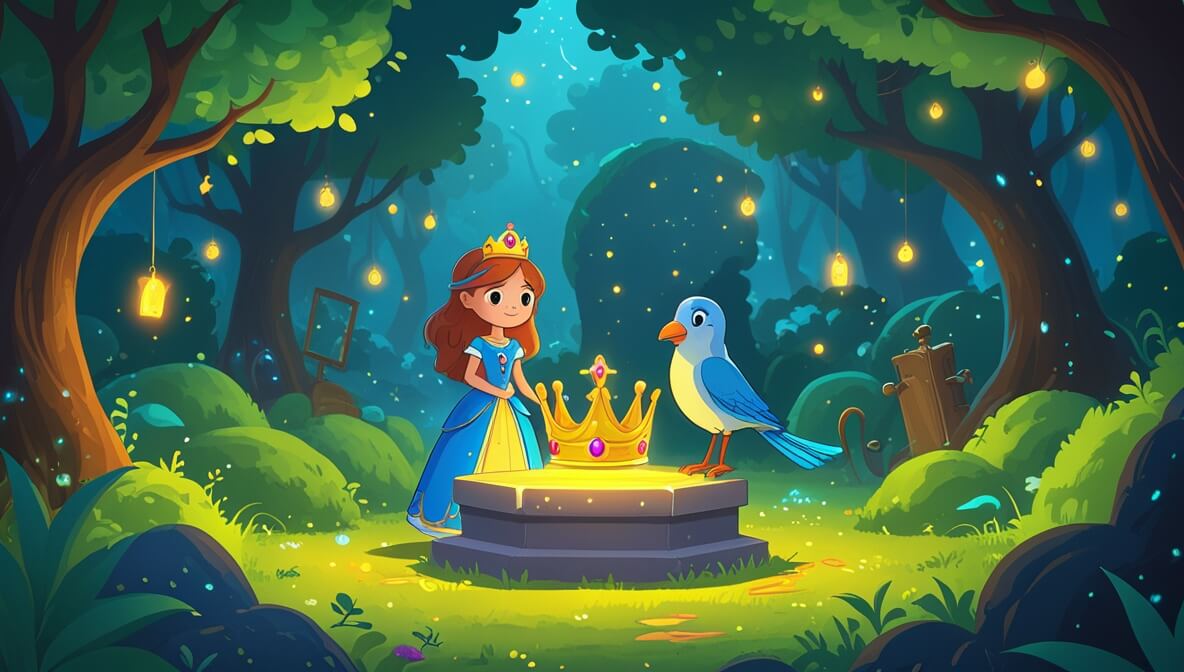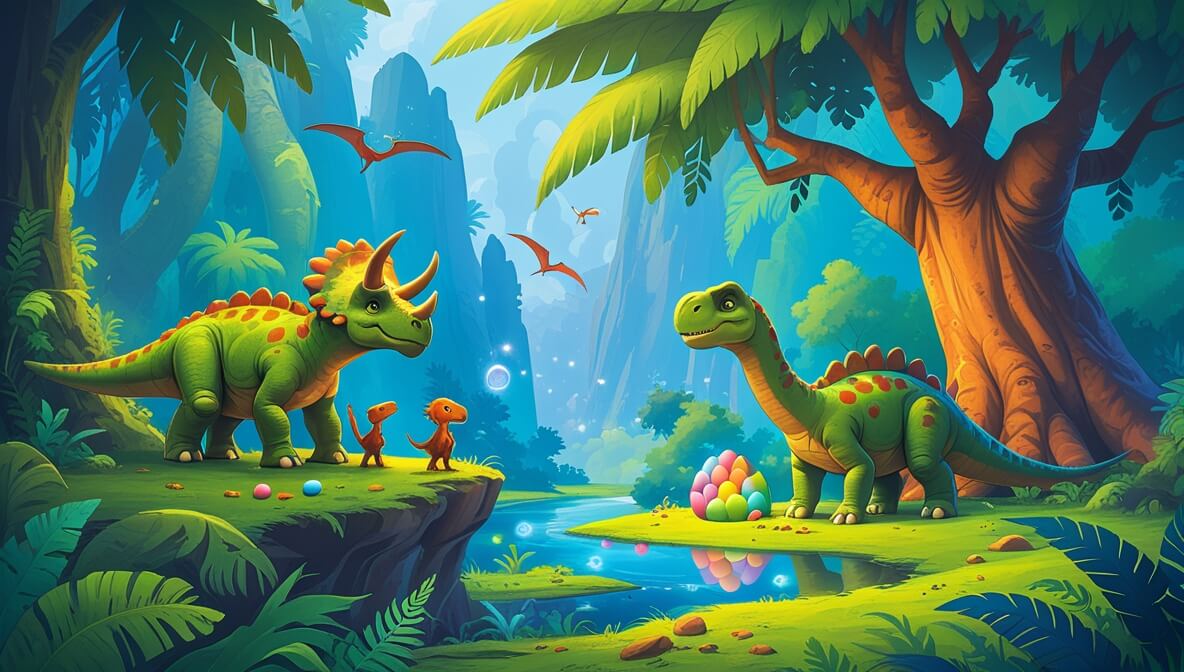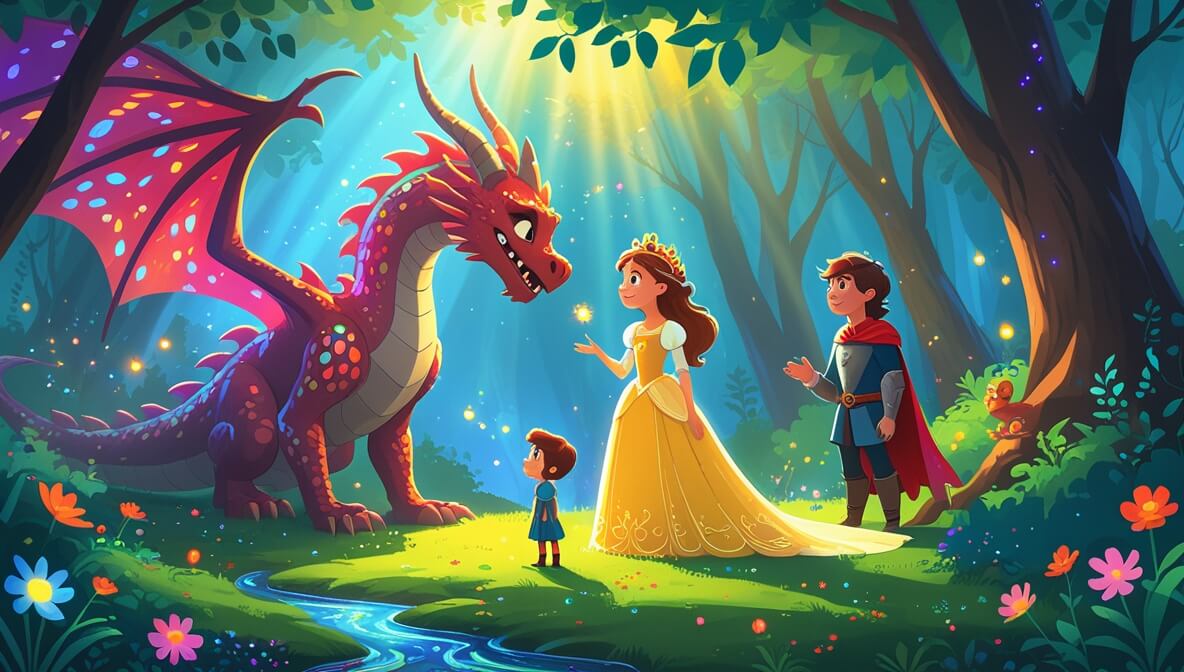In the heart of Enchanted Valley, a young princess discovers a hidden secret that could change her kingdom forever. With the help of a brave knight, she must unravel the mystery behind the magical forest.
Age Recommendation
3 – 12 years
Characters
Characters:
- Princess Mirabella (a curious and adventurous young princess)
- Sir Galen (a loyal and courageous knight)
- Queen Elara (the wise and kind queen of Enchanted Valley)
- Wisp (a mischievous but helpful forest fairy)
Story
Once upon a time, in the magical kingdom of Enchanted Valley, lived a young princess named Mirabella. She had golden hair that glistened like sunlight and a crown that sparkled with jewels. Mirabella loved to explore the beautiful gardens and forests surrounding her castle. One day, while wandering near the forest’s edge, she heard a soft whispering voice calling her name. Curiosity sparked in her heart as she followed the sound deeper into the woods.
The Whispering Trees
As Mirabella ventured further, the trees seemed to come alive with a gentle rustle. The leaves shimmered, and a tiny glowing fairy named Wisp appeared before her. “Princess Mirabella,” the fairy spoke, “I need your help to uncover a secret hidden deep within the forest. It is something that could bring great joy to your kingdom.”
The Secret Path
Mirabella, intrigued by the fairy’s words, agreed to help. Wisp guided her through a hidden path that twisted and turned like a maze. The forest grew denser, and soon, they reached a clearing bathed in golden light. There stood Sir Galen, the bravest knight in the kingdom, who had been summoned by the fairy to assist the princess on her quest.
The Enchanted Glade
The three companions entered a magical glade filled with vibrant flowers and sparkling streams. At its center stood an ancient tree, its branches reaching towards the sky, adorned with shimmering crystals. Wisp explained that the tree held the key to unlocking a powerful magic that could bring happiness and prosperity to Enchanted Valley.
The Test of Courage
To awaken the tree’s magic, Mirabella and Sir Galen needed to prove their bravery and kindness. Wisp gave them a series of tasks, each testing their courage, intellect, and compassion. They helped lost creatures find their way home, solved riddles from talking stones, and showed kindness to a grumpy old dragon guarding the tree.
The Tree’s Gift
With every challenge overcome, the tree’s crystals glowed brighter. Finally, the tree spoke in a gentle voice, “You have shown your true hearts, Princess Mirabella and Sir Galen. The magic of the forest is now yours to share with your kingdom.” With a bright flash, the tree released a shower of sparkling light over Enchanted Valley.
Mirabella and Galen returned to the castle, bringing the joyful magic to everyone in the kingdom. The fields bloomed with vibrant flowers, and laughter filled the air. Queen Elara praised her daughter and Sir Galen for their courage and kindness.
The end.
Moral of the Story
This story teaches the importance of courage, kindness, and teamwork. By helping others and working together, we can unlock the magic within ourselves and bring happiness to those around us.
Questions to Think About
- Why was it important for Mirabella and Sir Galen to work together?
- How did kindness make a difference in their adventure?
- What might the kingdom have been like if they did not unlock the tree’s magic?
- How did Wisp the fairy help Mirabella on her journey?
- What do you think was the most challenging task Mirabella and Galen faced?
Do You Know
- Fairy tales often use magical forests to symbolize mystery and adventure. These settings encourage imagination and exploration.
- In many cultures, trees are symbols of life, growth, and wisdom.
Word Explorer
- Enchanted: Filled with magic or wonder.
- Courage: The ability to do something that frightens you.
- Compassion: When you care about others and want to help them.
Emotions in the Story
- Curiosity: Felt by Mirabella when she heard the whispering voice in the forest.
- Bravery: Experienced by Mirabella and Sir Galen when they faced the challenges in the forest.
- Joy: Spread throughout the kingdom after the magic was unlocked.
Color Your Scene
Imagine the magical glade where Mirabella and Sir Galen found the ancient tree. Draw the vibrant flowers, sparkling streams, and the tree with its glowing crystals. Use bright colors like green, blue, and gold to bring the scene to life.
Parents’ Corner
This story is a great way to talk to your child about:
Courage: Discuss how Mirabella and Sir Galen faced their fears to achieve something great.
Teamwork: Explain the value of working together to solve problems and help others.
Kindness: Highlight how small acts of kindness can lead to big positive changes.
Exploration: Encourage your child to embrace curiosity and explore their surroundings safely.

